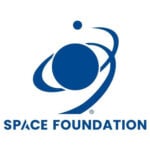Space Foundation Press Releases
Space Foundation announces rare celestial event
Written by: Space Foundation Editorial Team
COLORADO SPRINGS, Colo. (Mar. 31, 2004) — Dr. Neil DeGrasse Tyson, astrophysicist, director of the Hayden Planetarium and Space Foundation Board Member, reminded attendees today of the 20th National Space Symposium that the seven planets of antiquity will line up in this evening’s sky, an extremely rare occurance that doesn’t repeat until 2036. Back when everybody believed that Earth occupied the center of the known universe, seven naked-eye celestial objects stood out among the rest for one property they had in common: during the weeks and months of the year, they moved slowly against the background stars. The Greeks named them “wanderers.” And the Greek word for wanderer is “planeta” from which we derive the familiar word planet. These seven classical planets are the Sun, Moon, Mercury, Venus, Mars, Jupiter, and Saturn, and for one more week each are visible, one right after another, tracing a high arc across the sky through the Moon, from west to east. Shortly after the Sun sets in the west, look for Mercury to appear as a dim “star” very low on the horizon as twilight descents. A little higher in the sky is brilliant Venus – so bright that it triggers phone calls to municipal police departments from those who are sure they are seeing a hovering UFO. Higher still is ruddy Mars, currently being explored by the Spirit and Opportunity rovers – two robotic field geologists. Then comes Saturn, and the Moon, followed by Jupiter, lurking in the east and unmistakably bright. The importance of these seven planets to Western culture remains forever captured in the names we currently use for the seven days of the week, each traceable to the seven planets through Roman and Norse mythologies. For example, Saturday is obviously named for Saturn, while Sunday is named for the Sun, and Monday is named for the Moon. However, Thursday, while named for Thor, is actually the Norse counterpart to Jupiter, the king of the gods. In the Romance Languages, Thursday remains named for Jupiter, as in the Spanish Jueves, and the French Jeudi. After Nicolaus Copernicus introduced the Sun-centered cosmos in 1543, Earth gained planet distinction while the Sun and Moon lost theirs. The days of the week remain as a poetic relic of the geocentric universe. Alignments such as this happen two or three times per lifetime – don’t miss it. And remember, in life and in the universe, it is always best to keep looking up. About the Space Foundation
The Colorado Springs, Colo.-based Space Foundation is a national non-profit organization, which vigorously advances civil, commercial, and national security space endeavors and educational excellence. The Foundation’s signature event, the National Space Symposium, hosted at The Broadmoor this week and scheduled April 4-7, 2005, at The Broadmoor. The Space Foundation also conducts Strategic Space, scheduled Oct. 5-7 in Omaha, Neb. The Foundation recently created a Web site just for kids with fun space activities. The Foundation also manages an on-site NASA Educational Resource Center; offers two distinct Master’s in Space Studies Degrees in conjunction with the University of Colorado at Colorado Springs and Regis University; and has trained more than 30,000 teachers since 1986 on Teaching With Space through Space Discovery graduate courses and national conferences. For more information, visit www.spacefoundation.org.


